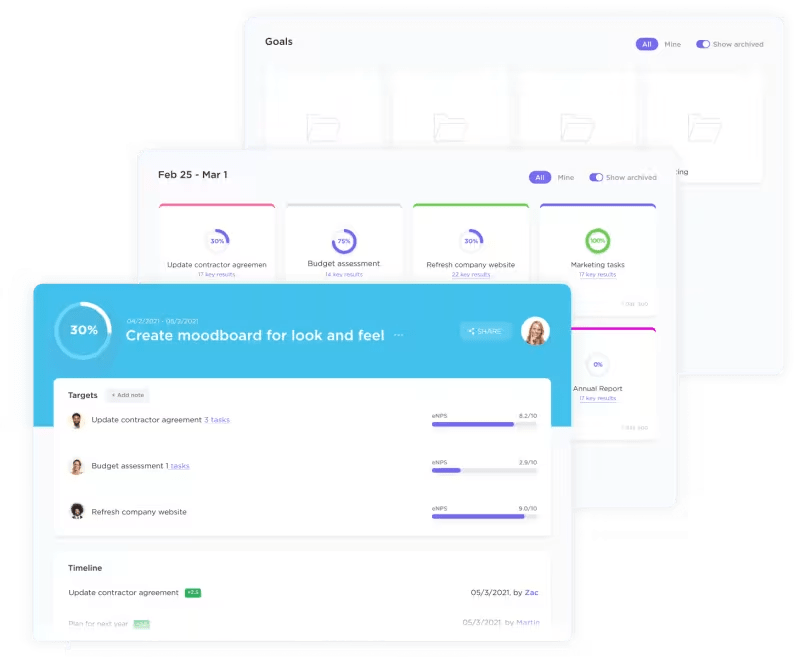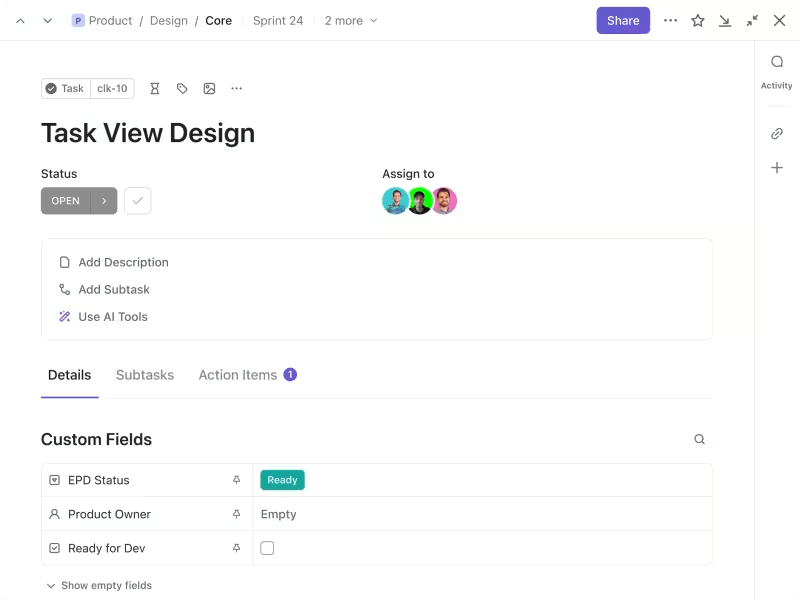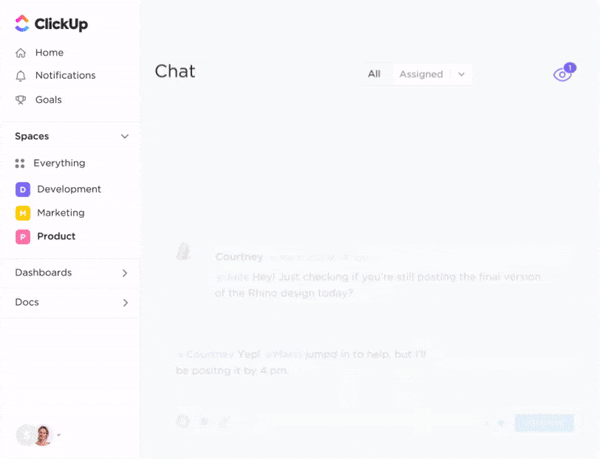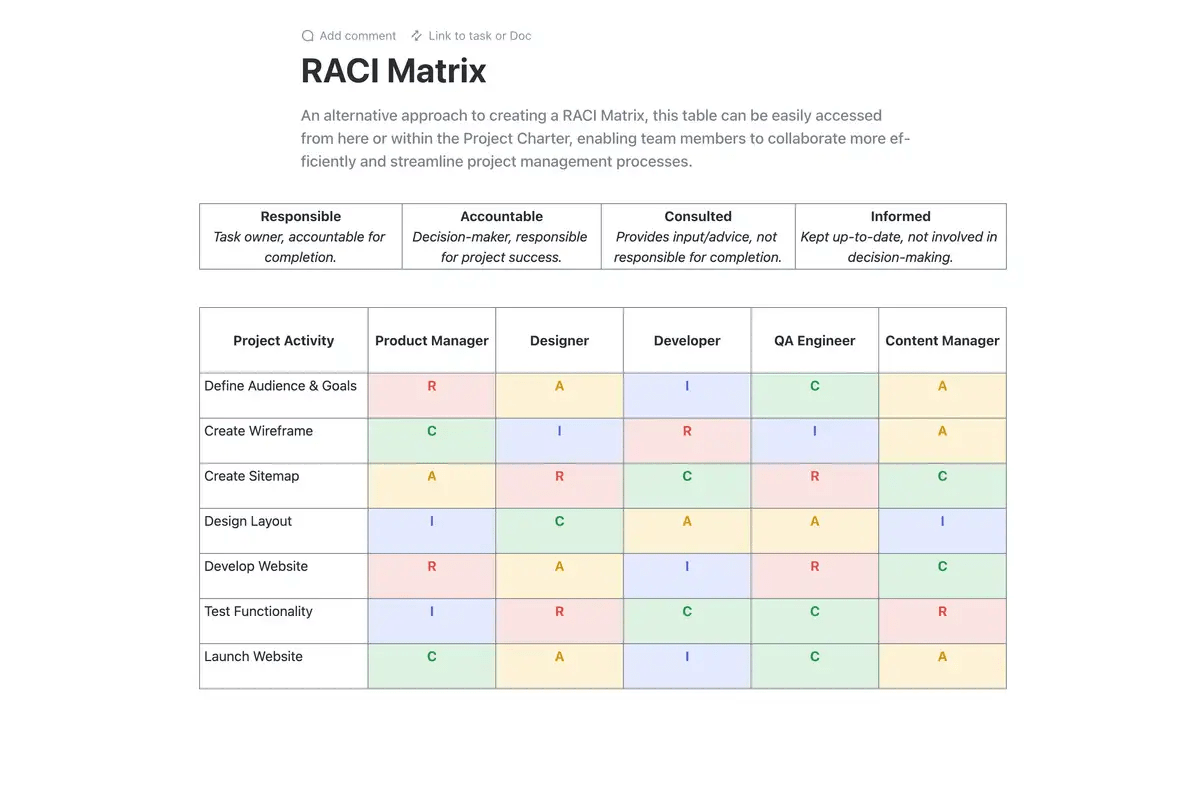

Have you ever handed off a project to a team member, only to find that they’ve dropped the ball on it? Or have them come back to you with all the reasons why they could not get the job done? It is easy to feel frustrated in such a situation and start micromanaging your team, believing that they lack ownership of their work.
Taking ownership at work means embracing responsibility for your own work and being accountable. Employees who show ownership are proactive, solution-oriented, and go the extra mile. It benefits the company, drives employee motivation, accelerates career advancement, and generates personal growth.
Your team members are also capable of taking ownership at work. However, you must nurture their ownership mindset and provide them with the necessary tools and resources.
So, how do you encourage ownership among your employees? Here are effective strategies to cultivate an ownership mindset in your team.
- What Does it Mean to Take Ownership at Work?
- Benefits of Taking Ownership at Work
- Ways to Encourage Ownership at Work
- 1. Set clear goals and targets
- 2. Promote feedback culture
- 3. Communicate effectively
- 4. Acknowledge and reward achievements
- 5. Delegate tasks and authority
- 6. Encourage initiative and innovation
- 7. Foster mentorship and peer support
- 8. Include employees in goal-setting
- 9. Promote professional development
- 10. Avoid micromanagement
- Using ClickUp to cultivate an ownership mindset
- Creating Ownership Culture with ClickUp
What Does it Mean to Take Ownership at Work?
Taking ownership at work means taking responsibility. It means not waiting for someone else to save the day but going ahead and doing it yourself.
Let’s make it simpler to understand with an example:
A critical employee presentation is due today, and a last-minute issue occurs with the presentation. There are two project leads, Emily and Mike. Emily notices the issue, informs her team, resolves the problem, and works extra hours to ensure everything is perfect.
On the other hand, Mike sees the same issue but decides it’s not his responsibility to fix it and assumes someone else will.
Which of the two would you consider more responsible? Clearly, Emily because she takes ownership and accountability.
Some of the key characteristics of an employee who takes ownership at work are:
- Proactive: Takes initiative to identify and solve problems and address issues promptly
- Accountable: Assumes responsibility for the success and failure of their projects and the overall organizational goals
- Resourceful: Comes up with creative solutions, has problem-solving skills, and makes the most of available resources
- Committed: Shows dedication towards achieving organizational goals by going the extra mile
- Focuses on improvement: Continuously seeks feedback and looks for ways to enhance performance and productivity
While these are some of the central attributes of an accountable mindset, note that accountability always goes hand-in-hand with authority. This means that when you hold an employee responsible for delivering a project on a specific date, you must also give them the authority to allocate resources and take other steps necessary for the delivery.
Authority gives individuals the power to make decisions and implement changes, while accountability ensures they are responsible for the outcomes of those decisions.
Benefits of Taking Ownership at Work
Building a team of employees capable of taking ownership at work can benefit you in numerous ways.
These include:
- Quicker decision-making and innovation: Individuals who feel responsible for their work act more decisively and innovatively. Employees take the initiative without waiting for directions or approval, which improves their performance overall
- Improved employee morale and engagement: Feeling responsible for business outcomes and having a stake in the project’s success makes the workforce more productive and enthusiastic
- Enhanced recruiting and retention: Current employees are more likely to stay, and prospective employees are expected to be drawn to a company that values their contributions and offers opportunities for ownership
Ways to Encourage Ownership at Work
We know why taking ownership at work is essential. Let’s now look at ten ways you can encourage and support this mindset in the best interest of both parties.
1. Set clear goals and targets
Your employees need to know what goals they’re working toward. Encourage them to set clear, measurable goals that align with the company’s objectives. This helps them understand how their efforts contribute to overall success, giving them direction and a sense of purpose.
Let’s take an example of an employee who uses a goal-setting template to set a goal to improve project efficiency by 20%. With this clear goal in mind, they regularly monitor their progress and adjust to stay on track and reach the target.
2. Promote feedback culture
Promote a culture where employees actively seek constructive feedback from peers and supervisors. This approach helps them understand their strengths and areas for improvement, encouraging continuous personal and professional growth.
Acting on this feedback also demonstrates an employee’s commitment to enhance their performance.
For example, say a marketing specialist completed a major campaign and requested feedback from their manager and team. They learned that the timing of content releases could be improved. Acting on this feedback, they adopted a data-driven approach for scheduling future content.
3. Communicate effectively
Communicate the company’s visions and goals to the employees and ensure they understand their contribution to achieving these. This helps them understand how their role directly impacts the organization’s success.
Effective communication also ensures everyone is aligned and aware of potential issues, facilitating a collaborative approach to problem-solving and project management.
For example, the CEO shares the company’s vision to enter new markets and explains how each department’s goals support this vision. The marketing team is specifically informed of its crucial role in targeted campaigns.
4. Acknowledge and reward achievements
Acknowledging and rewarding employees for their contribution from time to time is crucial to making them feel seen. It boosts employee morale and creates a more positive work environment.
For example, after a team member consistently delivers exceptional results and demonstrates dedication, the manager publicly praises their work during a team meeting and presents them with an opportunity to lead a high-profile project.
This recognition motivates the individual and sets a positive example for others, encouraging a culture of excellence and engagement across the team.

5. Delegate tasks and authority
Assign tasks and projects to employees, giving them the authority to define and manage their responsibilities. This approach boosts their commitment to achieving goals and allows them to take ownership of the task’s success.
For example, a manager assigns a new product development project to a senior team member, granting them full authority over design, budgeting, and vendor selection.
This promotes emergent leadership and commitment to the project’s success.
6. Encourage initiative and innovation
Managers can enhance employee engagement and commitment by encouraging employees to propose new ideas and take ownership of their deliverables.
This approach makes employees feel more involved and positions them to assume responsibility and shape project outcomes.
For example, if employees identify a gap in the current workflow, they should be encouraged to propose a solution and take the lead in implementing it for enhanced workload management.
7. Foster mentorship and peer support
Promote mentorship programs where experienced employees guide and support new employees to encourage team empowerment. By pairing experienced staff with new hires, managers and HR can build a culture of shared responsibility.
Additionally, it encourages a positive team environment in which experienced employees take ownership and responsibility for team goals and support new hires in doing the same.
For example, a senior developer, Sarah, mentors a new hire, Alex, by providing regular feedback and encouraging him to lead project tasks. This approach accelerates Alex’s development and reinforces Sarah’s leadership, promoting a collaborative culture and shared ownership.
8. Include employees in goal-setting
Involve employees in the initial phase of goal setting. When their input is incorporated, employees are more invested in achieving these goals and take proactive steps to address challenges and drive results.
For instance, if the team is tasked with improving customer satisfaction, employees might suggest specific initiatives, such as enhancing support services or redesigning customer feedback processes.
9. Promote professional development
Encouraging a culture of continuous improvement and development is also crucial for enhancing employees’ sense of ownership. Employees with opportunities to develop their technical skills are more likely to take on additional responsibilities.
Additionally, investment in the employees’ growth showcases a company’s commitment to their overall growth, promoting a positive culture.
For example, an employee who aspires to become a project lead can access advanced training sessions and mentoring from a senior project manager.
10. Avoid micromanagement
Micromanagement can undermine employees’ sense of ownership and autonomy by stifling their decision-making ability. On the contrary, trusting the team to handle day-to-day decisions allows the team to innovate and take ownership of the project’s success.
Here’s an example: The leader specifies that the team must deliver a prototype within three months but allows them to determine the best approach and tools.
Using ClickUp to cultivate an ownership mindset
We know what you are thinking—these measures might take a lot of work. What if there could be a tool to manage these initiatives and make it simpler for you to cultivate an ownership mindset?
ClickUp, a project and task management software, offers many features to encourage employees to take ownership of and monitor projects.
1. ClickUp Goals
ClickUp Goals lets you set clear, measurable goals for the team and organize them right at the beginning of the project.

Employees can sync their personal and organizational goals to better understand how their efforts contribute to the company’s success. Additionally, with ClickUp’s goal-tracking features, employees can monitor their progress in real time.
Setting milestones and tracking completion helps employees stay engaged and motivated. They can see their achievements and areas for improvement, which creates a greater sense of team accountability.
2. ClickUp Tasks
ClickUp Tasks manages employee ownership by providing clarity, structure, and accountability.

Once the overall goals are set, you can assign tasks to team members with detailed descriptions and deadlines. This clarity ensures that employees understand their responsibilities and what is expected of them, promoting a sense of ownership over their work.
You can also use the many ClickUp Views to examine status updates and completion percentages to gauge employees’ overall project contribution.

Further, to encourage engagement and ownership, communicate directly within the task—share ideas and updates, collaborate on projects, and resolve issues.
3. ClickUp Chat View
ClickUp Chat View simplifies communication by bringing everything under one roof. This helps employees stay informed and involved.

The Chat view also provides a forum for real-time updates and brainstorming sessions. This ensures employees can contribute, take ownership of tasks, and create a collaborative environment where everyone feels responsible for the project’s success.
Lastly, the Chat View stores records of all project-related conversations to enhance transparency. This helps employees understand the context of their assignments and see how their work fits into the broader project goals.
4. ClickUp RACI Planning Template
Want to create an all-in-one solution where you can jot down each member’s roles, responsibilities, and accountability? The RACI (Responsible, Accountable, Consulted, and Informed) framework is a project management technique for holding everyone accountable for their task.
The ClickUp RACI Planning Template, a combination of the work management and capacity planning templates, is all you need.
With this template, you can:
- Ensure employees know their specific roles and responsibilities to create a sense of ownership
- Facilitate visual mapping of roles and responsibilities to prevent confusion and overlaps
- Track consultations and communications related to tasks, ensuring that relevant information is shared and understood
- Encourage employees to track the status of tasks and see how their work impacts the project’s progress
Also Read: RACI Responsible vs Accountable
Creating Ownership Culture with ClickUp
Creating a culture of ownership at work is crucial for driving employee engagement, improving performance, and achieving organizational goals. By empowering employees with clear roles, goals, and feedback and providing recognition and support, leaders can cultivate a sense of responsibility and commitment in self-managed teams.
ClickUp helps you encourage taking ownership effectively with project tracking, task assignments, and real-time communication. Integrating ClickUp into your workflow allows you to streamline processes and reinforce a culture where taking ownership becomes a natural part of your team’s daily routine.
Sign up for ClickUp today and welcome a more ownership-inclusive work culture to your company!




